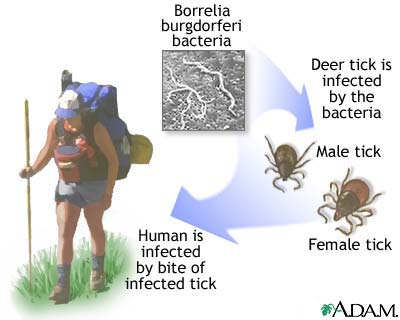
BEERSE, Belgium, January 4, 2011 /PRNewswire/ — Janssen-Cilag International NV today announced that it has receivedapproval from the European Commission for the first antipsychotic treatmentfor schizoaffective disorder. INVEGA(R) (paliperidone ER) is now indicatedfor the treatment of psychotic or manic symptoms of schizoaffective disorder.Effect on depressive symptoms has not been demonstrated.
The decision follows a positive recommendation by the Committee forMedicinal Products for Human use (CHMP), the scientific committee of theEuropean Medicines Agency. The CHMP concluded that the new therapeuticindication for INVEGA(R) brings significant clinical benefit in comparisonwith existing therapies.
Schizoaffective disorder is a chronic and disabling mental illness,characterised by both symptoms of schizophrenia and a major mood disorder,such as bipolar disorder or depression. Patients may experience the clinicalsymptoms of schizophrenia, such as hallucinations or delusions, as well assymptoms of mania and/or depression. Schizoaffective disorder is thought tobe one-third as common as schizophrenia, with an estimated prevalence ofapproximately 1 in every 300 people[1]. Schizoaffective disorder may alsoaccount for up to one-quarter of admissions to inpatient mental healthfacilities[2].
"Janssen is committed to helping improve the lives of people with seriousmental illness and has a long history of developing innovative medicines inthis field," said Dr Christophe Tessier*, Medical Affairs Director,Psychiatry, Janssen. "we are proud to be able to bring to market the firstantipsychotic treatment for schizoaffective disorder in Europe – a difficultto diagnose condition associated with a high rate of hospitalisations andsuicidal behaviour."
The approval is based on two international, randomised, double-blind,placebo-controlled 6-week studies in patients diagnosed with schizoaffectivedisorder[3,4]. In the first six-week study, patients (n=316) received one oftwo daily doses of INVEGA(R): 6 mg with the option to reduce to 3 mg, or 12mg with the option to reduce to 9 mg, or placebo[3]. In the second study,patients (n=311) were randomised to flexible doses of INVEGA(R) (3-12 mg oncedaily) either as monotherapy or in addition to treatment with moodstabilisers and/or antidepressants or placebo[4].
Efficacy was evaluated by the change in patients' symptoms after sixweeks as measured by the positive and negative syndrome scale (PANSS). Theresults for INVEGA(R) in both studies were superior to placebo. In the firststudy, patients receiving the higher dose of INVEGA(R) had a significantdecrease in their symptom score compared with those receiving placebo (-32.4compared with -24.1, p=0.003)[3]. The lower dose of INVEGA(R) was notsignificantly different from placebo (p=0.187). In the second study, the meandecrease in symptom score was -20.0 in the INVEGA(R) group and -10.8 in theplacebo group 3 (p=0.0001)[4]. furthermore, among patients with prominentmanic symptoms as measured by the Young Mania Rating Scale (YMRS baselinescore greater than or equal to 16) INVEGA(R) resulted in significantimprovements in manic symptomatology compared to placebo.
"These two studies combined represent the largest set of prospective datain patients with schizoaffective disorder and provide important insights intothis understudied disease", said Dr Carla M. Canuso**, Johnson & JohnsonPharmaceutical Research and Development, LLC, Titusville, NJ and leadinvestigator of the two studies. "INVEGA(R) was proven to be effective bothas a monotherapy and as an adjunctive therapy in reducing psychotic and manicsymptoms and provides a welcome treatment option for this debilitatingcondition."
About schizoaffective disorder
Schizoaffective disorder usually develops in early adulthood and is morecommon in women. it can affect all aspects of a person's daily life,including work, personal relationships and the ability to take care ofoneself. Patients with schizoaffective disorder have a high rate ofhospitalisations and a higher rate of co-morbid substance abuse than patientswith schizophrenia[5,6]. In addition, patients with schizoaffective disorderappear to be at greater risk of suicidal behaviour than patients withschizophrenia and mood disorders[5,6].
About INVEGA(R) (paliperidone ER)
INVEGA(R) (paliperidone ER), an atypical antipsychotic medication, wasfirst approved in Europe in June 2007 for the treatment of schizophrenia.INVEGA(R) is a novel molecule (paliperidone) delivered via an osmotic drugdelivery system (OROS(R)) which provides a steady, smooth release ofmedication over 24 hours. This reduces the peaks and troughs in drug plasmalevels associated with immediate release oral formulations and leads to a lowpotential for increased side effects as well as ensuring consistent efficacy.INVEGA(R) is the first antipsychotic medication to have significantlyimproved personal and social performance recognised in its Summary of ProductCharacteristics (SPC). further information about INVEGA(R) can be found at:
ema.europa.eu/ema/index.jsp?curl=pages/medicines/human/medicines/0
00746/human_med_000848.jsp&murl=menus/medicines/medicines.jsp&mid=WC0b01ac058001d124&jsenabled=true
(Due to the length of this URL, it may be necessary to copy and pastethis hyperlink into your Internet browser's URL address field. Remove thespace if one exists.)
Janssen Pharmaceutical Companies of Johnson & Johnson are dedicated toaddressing and solving the most important unmet medical needs of our time,including oncology (e.g. multiple myeloma and prostate cancer), immunology(e.g. psoriasis), neuroscience (e.g. schizophrenia, dementia and pain),infectious disease (e.g. HIV/AIDS, Hepatitis C and tuberculosis), andcardiovascular and metabolic diseases (e.g. diabetes). Driven by ourcommitment to patients, we develop sustainable, integrated healthcaresolutions by working side-by-side with healthcare stakeholders, based onpartnerships of trust and transparency. More information can be found atjanssen-emea.com/.
1. Perela J et al. Lifetime Prevalence of Psychotic and Bipolar IDisorders in a General Population. Arch Gen Psychiatry. 2007;64, 19 – 28.
2. Kent S, Fogarty M, Yellowlees P. (1995). Heavy Utilization ofInpatient and Outpatient Services in a Public Mental Health Service.Psychiatr Serv. 1995;46, 12, 1254 – 1257.
3. Canuso C et al. A Randomized, Double-Blind, Placebo-Controlled Studyof 2 Dose Ranges of Paliperidone Extended-Release in the Treatment ofSubjects with Schizoaffective Disorder. J Clin Psychiatry. 2010;71, 5, 587 -598.
4. Canuso C et al. Paliperidone Extended-Release in SchizoaffectiveDisorder: A Randomized, Controlled Study Comparing a Flexible Dose WithPlacebo in Patients Treated with and Without Antidepressants and/or MoodStabilizers. J Clin Psychopharmacology. 2010;30, 5, 487 – 495.
5. Cheniaux E, Landeira-Fernandez J, Lessa Telles L, et al. Doesschizoaffective disorder really exist? A systematic review of the studiesthat compared schizoaffective disorder with schizophrenia or mood disorders.J Affect Disord. 2008;106, 3, 209-217.
6. Potkin SG, Alphs L, Hsu C, et al. InterSePT Study Group. Predictingsuicidal risk in schizophrenic and schizoaffective patients in a prospectivetwo-year trial. Biol Psychiatry. 2003;54, 4, 444-452.
* Dr Christophe Tessier is a full time employee of Janssen, EMEA
** Dr Carla M. Canuso is a full time employee of Johnson & JohnsonPharmaceutical Research and Development, LLC, Titusville, NJ